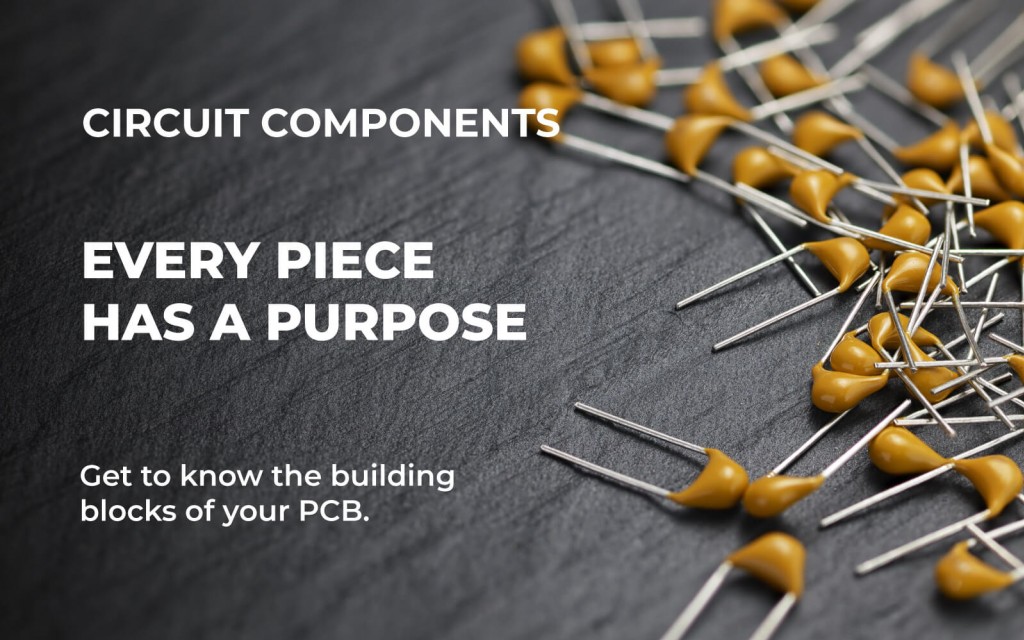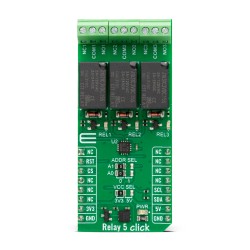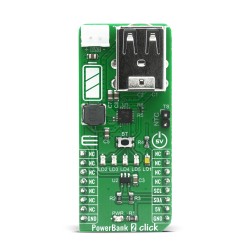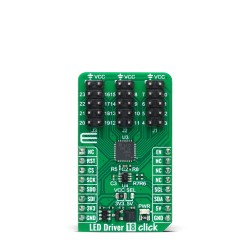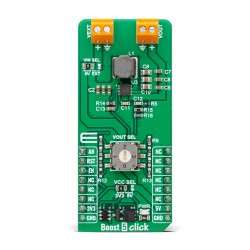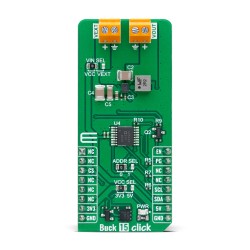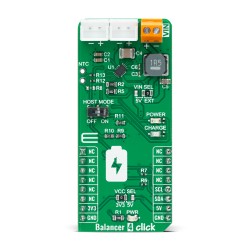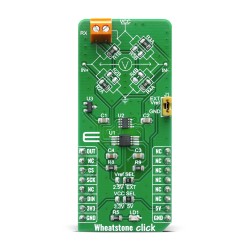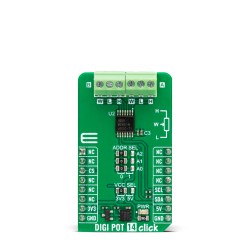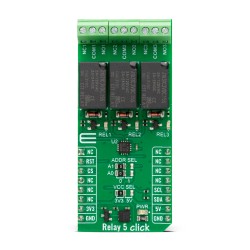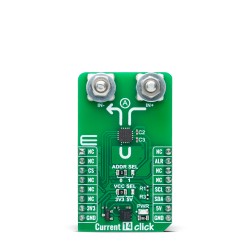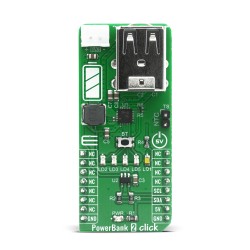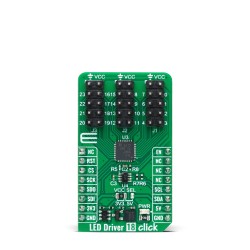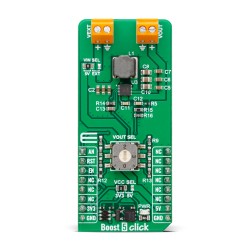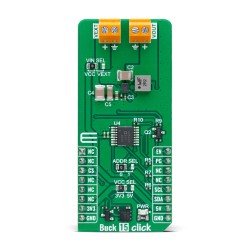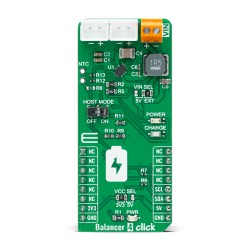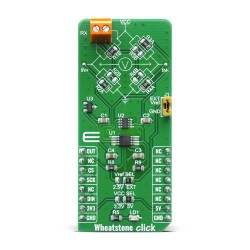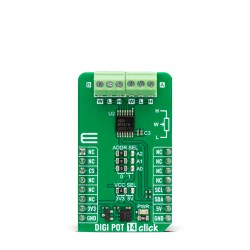Circuit board components are the heart of modern electronics. They are essential for the operation of electronic devices.
These components come in various types, each with a unique function. Understanding them is crucial for anyone in electronics.
From resistors to microcontrollers, each part plays a vital role. They control, store, and manage electrical energy.
Circuit boards, or PCBs, are the backbone of these systems. They connect and support the components.
The choice of components affects device performance and reliability. It also impacts the cost and efficiency of the final product.
Advancements in technology continue to evolve these components. This leads to more compact and powerful electronic devices.
Knowledge of circuit board components is key for design and troubleshooting. It is essential for both hobbyists and professionals.
This guide will explore the types and functions of these components. Let's dive into the world of electronic parts.
What Are Circuit Board Components?
Circuit board components are the building blocks of electronic systems. They are mounted on printed circuit boards (PCBs).
Each component serves a specific purpose. Together, they create functional electronic circuits.
Key components include resistors, capacitors, and transistors. These parts control and manipulate electrical currents.
Here's a simple list of common circuit board components:
- Resistors: Control current flow.
- Capacitors: Store electric charge.
- Diodes: Allow current in one direction.
- Transistors: Amplify or switch signals.
These components must work together to allow devices to perform complex tasks, ensuring seamless functionality.
Classification of Circuit Board Components
Circuit board components fall into different categories. Each category serves distinct functions.
Passive components like resistors and capacitors do not need an external power supply to operate. They are fundamental to most circuits.
Active components, such as transistors and integrated circuits, need power to function. They control energy flow and signal processing.
Electromechanical components include switches and relays. These combine mechanical and electrical operations to control circuits.
Here's a summary of component classifications:
- Passive Components: Resistors, Capacitors
- Active Components: Transistors, Integrated Circuits
- Electromechanical Components: Switches, Relays
Understanding these classifications helps in designing efficient electronic systems.
Passive Components
Passive components form the backbone of many circuits. They don't need outside power.
Common passive components include:
- Resistors: Manage current flow.
- Capacitors: Store energy.
Passive components ensure electronic stability and performance across different devices.
Active Components
Active components are essential in modern electronics. They need external power to work.
Examples include:
- Transistors: Amplify signals.
- Integrated Circuits: Handle complex operations.
Without active components, contemporary electronic devices couldn't function efficiently.
Electromechanical Components
Electromechanical components blend mechanical with electrical operations. They're crucial for control functions.
Popular examples are:
- Switches: Toggle circuits on or off.
- Relays: Allow low-power signals to control high-power devices.
These components are vital in automating electrical tasks across different applications.
Essential Passive Components and Their Functions
Passive components are vital to every electronic circuit. They do not produce energy but manage its flow.
The main passive components include resistors, capacitors, and inductors. Each serves a specific function, enhancing circuit performance.
Resistors limit current, protecting components from damage. Capacitors store and release electrical energy, stabilizing voltage. Inductors store energy in a magnetic field, aiding in energy conversion.
Below are some common functions of passive components:
- Regulating Current: Reducing flow to protect electronics.
- Storing and Discharging Energy: Ensuring consistent power supply.
- Filtering and Tuning: Enhancing signal purity and quality.
Understanding these components enhances the design and functionality of electronic devices.
Resistors
Resistors are simple yet essential electronic parts. They control current flow within a circuit. These components prevent damage by limiting excess current. Additionally, resistors facilitate voltage reduction across circuits.
Common uses for resistors include:
- Voltage Division: Distributing voltage equally.
- Current Limiting: Protecting components from excess current.
- Heat Generation: Converting electrical energy into heat.
Their versatility ensures they remain crucial to electronic design.
Capacitors
Capacitors are key elements in storing and releasing energy. They stabilize current and voltage in circuits.
Their primary role is to smooth fluctuations and power surges. This helps maintain device operation and longevity.
Capacitors are utilized for:
- Energy Storage: Holding a charge for later use.
- Signal Coupling: Connecting AC signals between circuits.
- Voltage Smoothing: Reducing noise in power supplies.
Their presence is vital for maintaining circuit stability and efficiency.
Inductors
Inductors store energy in magnetic fields. They help in controlling voltage and frequency. In power supplies, inductors manage currents and filter signals. This process ensures clean and stable voltage outputs.
Applications for inductors include:
- Filtering Signals: Removing interference from circuits.
- Power Supply Smoothing: Minimizing ripples in output.
- Energy Storage: Temporary energy holding in magnetic fields.
Inductors are integral in maintaining signal clarity and efficiency.
Potentiometers and Variable Resistors
Potentiometers and variable resistors offer adjustable resistance. They allow users to fine-tune circuit performance.
These components are common in applications needing adjustable voltage or current.
Functions include:
- Volume Control: Adjusting audio levels.
- Tuning Circuits: Modifying circuit parameters.
- Calibrating Equipment: Ensuring precise measurements.
Their adaptability makes them invaluable in various designs.
Fuses and Circuit Protection Devices
Fuses and circuit protection devices safeguard electronics. They prevent damage due to overcurrent and short circuits.
When excess current occurs, fuses disrupt the flow, stopping damage.
Applications of fuses include:
- Circuit Protection: Cutting power to prevent damage.
- Overload Prevention: Stopping excess current from flowing.
- Safety Assurance: Ensuring safe operation conditions.
These devices are crucial for maintaining electronic safety and reliability.
Key Active Components and Their Roles
Active components are indispensable in electronic devices. They require external power to operate and can amplify signals.
These components include diodes, transistors, integrated circuits, and microcontrollers. Each has a distinct function vital to circuit operation.
Active components convert energy, control power flow, and process signals. They make circuits dynamic and controllable.
Here’s a breakdown of common active component functions:
- Signal Amplification: Boosting weak signals for processing.
- Switching Operations: Rapidly turning circuits on and off.
- Power Management: Distributing power efficiently across the system.
Understanding these functions aids in enhancing electronic design and innovation.
Diodes
Diodes are simple yet powerful components. They allow current to flow in only one direction. This unidirectional flow is essential in converting AC to DC. Diodes protect circuits from unwanted reverse currents.
They are commonly used for:
- Rectification: Converting alternating current (AC) to direct current (DC).
- Signal Demodulation: Extracting information from modulated signals.
- Circuit Protection: Shielding components from reverse voltage.
Without diodes, many electronic circuits would falter under reverse currents.
Transistors
Transistors are crucial for modern electronics. They serve as switches and amplifiers in circuits. These components control large voltage or current with minimal input. Their versatility is vital for computing and digital applications.
Key functions of transistors include:
- Signal Amplification: Increasing signal strength.
- Switching: Enabling digital logic operations.
- Voltage Regulation: Stabilizing power across components.
Transistors drive the functionality and efficiency of countless devices.
Integrated Circuits (ICs)
Integrated circuits, or ICs, revolutionized electronics. They pack multiple components into a single chip.
ICs perform complex functions that previously required large assemblies. This miniaturization has led to compact and powerful devices.
Their primary uses cover:
- Complex Circuitry: Enabling diverse functions on a small scale.
- Signal Processing: Handling audio, video, and data signals.
- Computing Tasks: Performing calculations and logic operations.
ICs are central to modern tech, merging multiple roles in limited space.
Microcontrollers and Microprocessors
Microcontrollers and microprocessors are tiny computers within devices. They execute programs and manage operations.
These components are crucial for automation and control in electronics. They process data and make decisions based on inputs.
Common applications include:
- Embedded Control: Running software for device operation.
- Data Processing: Handling computational tasks efficiently.
- Interfacing: Managing communication between components.
Microcontrollers and microprocessors are the brains behind smart electronics, providing adaptability and precision.
Electromechanical and Other Important Components
Electromechanical components combine electrical and mechanical functions. They are vital for manual control and interaction within circuits. These components include switches, relays, connectors, LEDs, and sensors. Each plays a unique role in managing circuit operations.
Switches allow users to control current flow manually. They are critical for user interfaces and power management. Relays enable control of a high-power circuit with a low-power signal, offering isolation and safety.
Connectors and sockets ensure secure connections between components. They facilitate easy assembly and maintenance. LEDs, used for indication and lighting, provide visual feedback in systems. Lastly, sensors convert physical events into electronic signals, enabling devices to interact with the environment.
List of Functions Performed by Electromechanical Components:
- Manual Control: Allowing user interaction via switches.
- Signal Isolation: Using relays for power management.
- Connection Facilitation: Offering stable interfaces between parts.
Understanding these elements enhances circuit board design and functionality.
Switches
Switches regulate the flow of electric current. They enable users to start or stop circuits. Available in various forms, they are versatile components.
Common types of switches include:
- Toggle Switches: Lever-operated for simple on/off control.
- Push-button Switches: Press-based activation for momentary contact.
- Slide Switches: Allow smooth transition between states.
Switches are foundational elements, ensuring manual control of electronic circuits.
Relays
Relays are electrically operated switches. They use a signal to control a separate circuit. This allows safe management of high voltages.
Relays are often employed for:
- Circuit Control: Managing large currents with minimal input.
- Isolation: Protecting low-power components from high voltage.
- Automation: Enabling remote operation of switches.
Relays simplify circuit management by providing control with safety and precision.
Connectors and Sockets
Connectors and sockets establish stable electronic connections. They simplify assembly and maintenance of circuit boards.
These components vary by function:
- Pin Connectors: Ensure secure wiring connections.
- Board-to-Board Connectors: Link separate PCBs effectively.
- Socket Connectors: Facilitate easy insertion and removal of components.
Connectors keep electronic systems integrated and functional, ensuring easy component interfacing.
LEDs and Display Components
LEDs are light-emitting components used for indication and display. They provide essential visual feedback.
Various LED applications include:
- Status Indication: Showing operational status.
- Lighting: Offering efficient and effective illumination.
- Display Technologies: Forming the basis for screens and indicators.
LEDs enhance user interaction with bright and efficient displays in devices.
Sensors
Sensors detect changes in the environment. They convert these changes into electrical signals.
Common types include:
- Temperature Sensors: Monitor and control thermal conditions.
- Motion Sensors: Detect movement for security systems.
- Proximity Sensors: Measure distance or detect objects.
Sensors enable electronic devices to respond actively to the physical world, adding layers of automation and interaction.
Special Components: Oscillators, Transformers, and More
Specialized components add unique functionalities to circuit boards. These include oscillators, transformers, and power sources. They are critical for stable and efficient operations. Oscillators maintain timing and frequency standards for electronic devices.
Transformers manage voltage levels, adapting power for different circuit requirements. Batteries provide the necessary energy to power circuits. These components are indispensable for ensuring optimal performance. They also enhance the adaptability of electronic systems in various settings.
Key roles of special components:
- Timing and Frequency: Defined by oscillators.
- Voltage Management: Handled by transformers.
- Energy Supply: Provided by batteries.
Each plays a unique role in maintaining circuit functionality.
Crystal Oscillators
Crystal oscillators create steady and precise frequencies. This is essential for clock signals in electronics. They are used in watches, computers, and communication devices.
Common features of crystal oscillators include:
- Precision Timing: Maintaining accurate operation.
- Stability: Ensuring minimal frequency drift.
- Wide Frequency Range: Covering various electronic needs.
Crystal oscillators are vital for the timing accuracy within electronic circuits.
Transformers
Transformers alter voltage levels between circuits. They adjust incoming power to fit circuit needs. They are crucial for safety and efficiency.
Transformer applications:
- Voltage Conversion: Matching power levels with device requirements.
- Isolation: Keeping circuits safe from high voltages.
- Efficiency Boost: Optimizing power transfer.
Transformers are key to adaptable and safe electronic operation.
Batteries and Power Sources
Batteries supply energy to circuits. They enable independent device function without direct power. Power sources range from disposable to rechargeable.
Features of batteries:
- Portability: Enabling mobile device operation.
- Reusability: Offered by rechargeable types.
- Compatibility: Available in various sizes and power outputs.
Batteries and power sources ensure continuous energy supply for electronic components.
Surface Mount vs. Through-Hole Components
Surface mount and through-hole are two methods for attaching components to circuit boards. Each offers unique benefits and trade-offs.
Surface mount components are placed directly onto the PCB surface. This allows for more compact designs and higher density of components. They are often used for small and intricate circuits found in modern devices.
Through-hole components, however, have leads that pass through holes in the board. They provide stronger mechanical bonds, making them ideal for prototypes and durable applications.
Key differences include:
- Size and Density: Surface mount allows for smaller sizes.
- Mechanical Strength: Through-hole offers robust stability.
- Application Use: Each suited to different device requirements.
Choosing between the two depends on the specific needs of the electronic project.
How to Identify Circuit Board Components
Identifying circuit board components is essential for anyone working with electronics. Each component has unique markings and shapes that help in identification.
Start by examining the labels and numbers on the component. They often indicate the part's type and specifications. Use a magnifying glass if needed for small parts.
Familiarize yourself with common symbols found in circuit diagrams. They provide visual cues and are universal in electronic schematics.
Consider creating a checklist to identify components:
- Labels and Part Numbers: Check for printed information.
- Component Shapes: Recognize distinct forms, like cylindrical capacitors.
- Symbols and Diagrams: Learn common electronic symbols.
Understanding these elements is crucial for accurate circuit analysis and repair. It ensures proper function and aids in troubleshooting issues.
Factors to Consider When Selecting Circuit Board Components
Choosing the right circuit board components is critical for device performance and reliability. Every decision impacts the final product.
Consider electrical specifications first, including voltage and current ratings. These must align with the circuit's requirements to prevent failure.
Environmental conditions are also crucial. Components must withstand factors such as temperature and humidity variations in their operating environment.
Cost is another important consideration. Balancing quality with budget constraints is key to successful product design.
Here's a checklist for selecting components:
- Electrical Specifications: Match voltage and current needs.
- Environmental Tolerance: Ensure robustness in operating conditions.
- Budget and Quality: Balance cost with performance.
- Size and Compatibility: Fit within physical constraints of the PCB.
Evaluating these factors ensures optimal performance and longevity of the electronic device.
Common Issues and Troubleshooting Tips
Circuit board components can sometimes encounter problems, affecting device performance. Identifying these issues early is vital for effective troubleshooting.
One common problem is component overheating. This often leads to premature failure and can be addressed with proper heat dissipation strategies.
Intermittent connections can also cause erratic behavior. Ensuring strong solder joints and using quality connectors is crucial to maintain consistent performance.
Misplaced or incorrect components can disrupt circuit functionality, causing unexpected results. Verifying component placement against the circuit diagram is an essential troubleshooting step.
Here are a few common issues and solutions:
- Overheating: Improve cooling and check for overloading.
- Intermittent Connections: Inspect and reinforce connections.
- Misplaced Components: Double-check placement and orientation.
- Unresponsive Components: Test individual components for faults.
Taking time to understand these issues can significantly improve troubleshooting efficiency. Proper maintenance and regular inspections are important to minimize potential problems.
Trends and Innovations in Circuit Board Components
The world of circuit board components is always evolving, driven by technological advancements. This evolution is fueled by the need for more efficient and compact electronic parts.
One significant trend is miniaturization. As devices grow smaller, circuit board components must also shrink while maintaining their performance.
Another key innovation is the increase in integration. Components now often combine multiple functions to save space and improve efficiency.
New materials and manufacturing techniques are also shaping the future of electronic assembly. These advancements improve durability and reduce environmental impact.
Some emerging trends and innovations include:
- Miniaturization: Smaller, efficient components.
- Integration: Multi-functional components in a single package.
- New Materials: Enhanced performance and sustainability.
- Smart Components: Enabled for IoT applications.
These trends and innovations promise exciting changes in circuit board design. Staying informed about these developments is crucial for anyone in the electronics field.
Conclusion and Key Takeaways
Circuit board components are vital to the functionality of electronic devices. A deep understanding of these electronic components is essential for anyone involved in designing and repairing electronic circuits.
In summary, here are the key points to remember:
- Circuit boards are the backbone of electronics.
- Components vary in function and complexity.
- Proper selection and design influence performance.
With these insights, you can better appreciate the intricacies of circuit board components and their role in modern electronics. This knowledge is essential for innovation and troubleshooting in the electronics industry.
Want to See These Components in Action?
MIKROE’s Click boards™ make it easy to explore different types of electronic components - sensors, amplifiers, transistors, and more - without needing custom PCBs. Just plug them into one of our development boards like UNI-DS v8 or Fusion v8, and start experimenting in NECTO Studio. Perfect for students, engineers, and anyone building real-world embedded systems.
REAL-WORLD ROBOTICS PROJECTS: CLICK BOARDS™ ON EMBEDDEDWIKI
If you want to go further and see how these components function in real-world embedded systems, visit EmbeddedWiki. This open platform hosts step-by-step projects that utilize the same types of components featured in this article - giving you insights into how resistors, capacitors, transceivers, converters, and controllers are used in complete applications.
Each project includes full source code, schematics, and setup instructions, making it a practical resource for hobbyists, educators, and embedded engineers looking to deepen their understanding of PCB component usage.
ABOUT MIKROE
MIKROE is committed to changing the embedded electronics industry through the use of time-saving industry-standard hardware and software solutions. With unique concepts like Remote Access, One New Product/Day, Multi-Architectural IDE and most recently, the EmbeddedWiki™ platform with more than million ready-for-use projects, MIKROE combines its dev boards, compilers, smart displays, programmers/debuggers and 1850+ Click peripheral boards to dramatically cut development time. mikroBUS™; mikroSDK™; SiBRAIN™ and DISCON™ are open standards and mikroBUS only has been adopted by over 100 leading microcontroller companies and integrated on their development boards.
Your MIKROE











